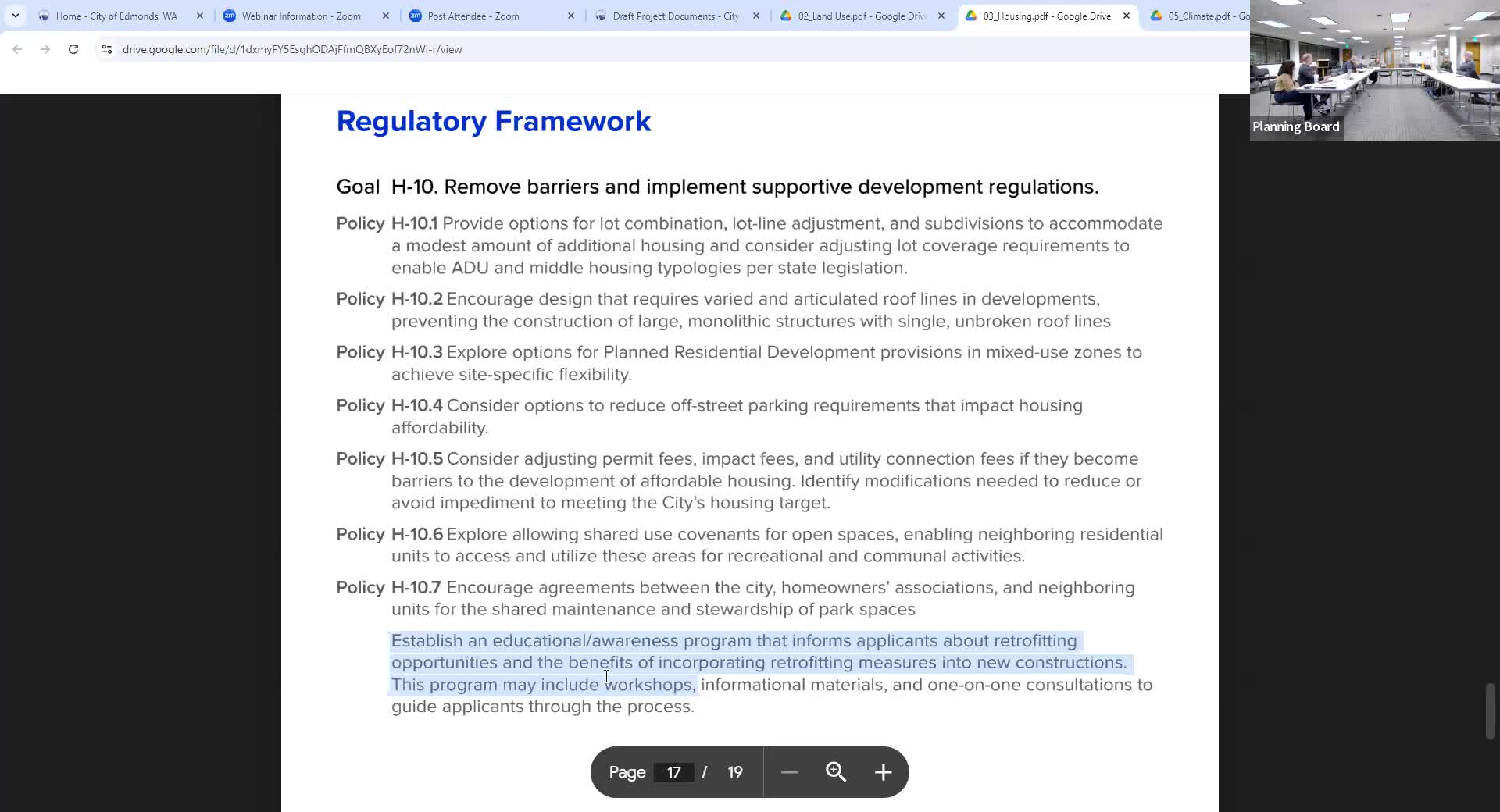Housing Bill Sparks Controversy Over Lot Coverage Changes
October 24, 2024 | Edmonds, Snohomish County, Washington
This article was created by AI summarizing key points discussed. AI makes mistakes, so for full details and context, please refer to the video of the full meeting. Please report any errors so we can fix them. Report an error »

In a recent government meeting, discussions centered on proposed housing bills aimed at increasing residential density in single-family zones. The focus was on options for lot combinations, lot line adjustments, and subdivisions to facilitate modest housing growth. One significant proposal discussed involved the potential division of a 10,000 square foot lot into four smaller 2,500 square foot lots, with an increase in lot coverage from 35% to 45%.
This change could lead to a substantial rise in impervious surfaces, raising concerns about stormwater management and environmental impacts. Officials noted that the proposed adjustments are not limited to urban centers but could apply to all residential parcels, potentially leading to denser developments across various neighborhoods.
The conversation also highlighted the distinction between lot coverage and impervious surfaces, emphasizing the need for careful management of stormwater runoff. The implications of these changes could affect tree canopy loss and overall environmental health, prompting calls for a balanced approach to housing development that considers both growth and sustainability.
As the government prepares to refine the housing code, stakeholders are urged to weigh the benefits of increased housing options against the potential environmental consequences.
This change could lead to a substantial rise in impervious surfaces, raising concerns about stormwater management and environmental impacts. Officials noted that the proposed adjustments are not limited to urban centers but could apply to all residential parcels, potentially leading to denser developments across various neighborhoods.
The conversation also highlighted the distinction between lot coverage and impervious surfaces, emphasizing the need for careful management of stormwater runoff. The implications of these changes could affect tree canopy loss and overall environmental health, prompting calls for a balanced approach to housing development that considers both growth and sustainability.
As the government prepares to refine the housing code, stakeholders are urged to weigh the benefits of increased housing options against the potential environmental consequences.
View full meeting
This article is based on a recent meeting—watch the full video and explore the complete transcript for deeper insights into the discussion.
View full meeting
